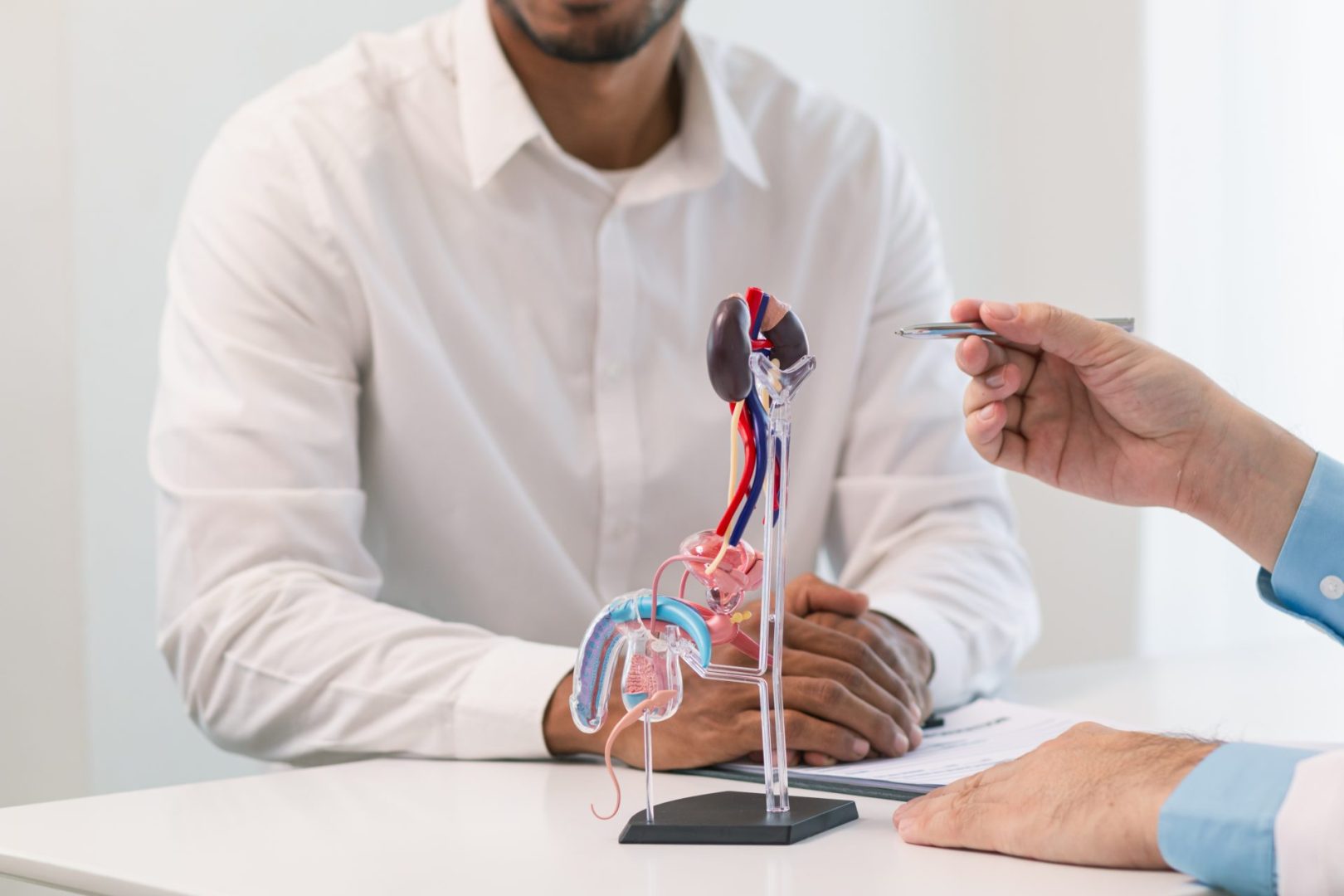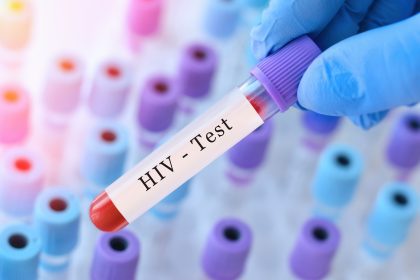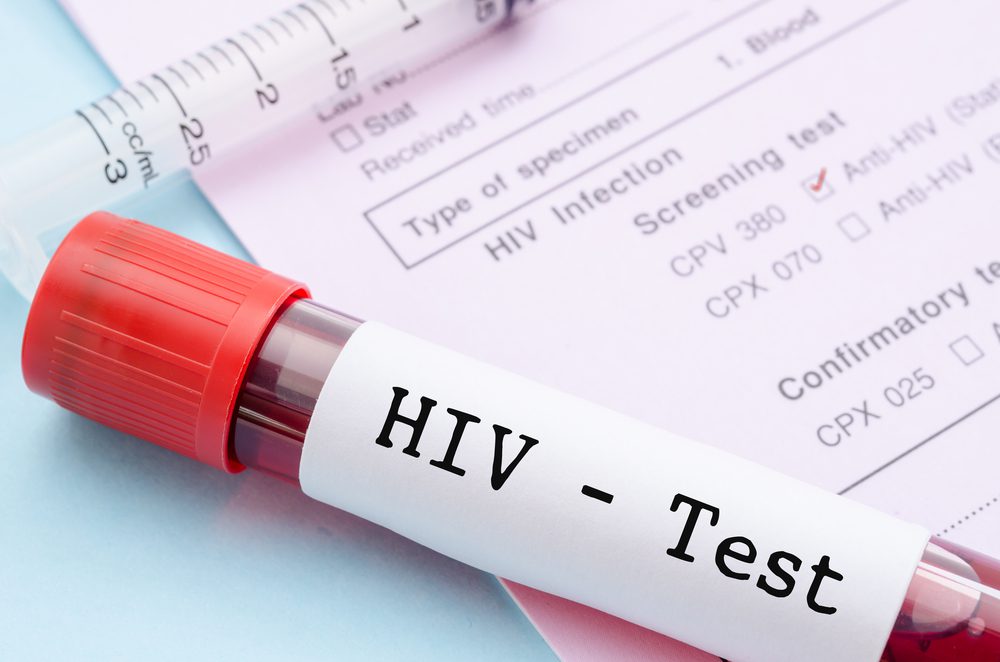Prostate cancer surgery — known medically as radical prostatectomy — effectively removes cancerous tissue, offering many men excellent cancer control. However, the procedure’s impact extends far beyond simply eliminating cancer. The prostate’s location deep within the male pelvis, surrounded by vital structures controlling urination and sexual function, means surgery in this region carries significant risks for complications that can affect quality of life.
Understanding these potential complications before surgery helps patients develop realistic expectations about recovery and prepare for challenges they might face. While surgical techniques have improved dramatically in recent decades, particularly with robotic-assisted approaches, complications remain a reality for many men undergoing this procedure.
Recovery experiences vary tremendously between individuals. Some men regain urinary control within weeks and resume sexual activity within months, while others face prolonged challenges with these functions. Age, pre-surgical function, surgical technique, surgeon experience, and individual anatomical variations all influence recovery outcomes.
The good news amid these challenges? Many complications respond well to treatment, and recovery often continues progressively for up to two years after surgery. Patience, appropriate interventions, and realistic expectations help many men navigate this recovery journey successfully, even when complications occur.
This comprehensive overview examines the most significant potential complications following prostate cancer surgery, exploring their causes, frequency, management options, and recovery expectations. Armed with this knowledge, patients can better prepare for recovery and actively participate in addressing complications if they arise.
Urinary incontinence: When control becomes unpredictable
Urinary incontinence—the involuntary leakage of urine—represents the most common and immediately noticeable complication following prostate cancer surgery. While most men experience some degree of incontinence immediately after catheter removal, its severity and duration vary considerably between individuals.
The primary cause stems from surgical effects on the urinary sphincter — the muscle responsible for maintaining urinary control. During prostatectomy, the surgeon must remove the prostate from its position directly beneath the bladder, where it surrounds the urethra. This disrupts the normal sphincter mechanism temporarily or permanently, depending on individual factors and surgical technique.
Stress incontinence occurs most frequently, manifesting as urine leakage during activities that increase abdominal pressure such as coughing, sneezing, laughing, or physical exertion. This type accounts for approximately 90 percent of post-prostatectomy incontinence cases, resulting from weakened sphincter function.
Urgency incontinence—sudden, intense urges to urinate with insufficient time to reach a bathroom—affects some men following surgery. This form stems from bladder muscle instability rather than sphincter weakness and requires different management approaches than stress incontinence.
Recovery timelines vary significantly. Many men experience substantial improvement within 3-6 months, with continued progress for up to one year. Approximately 60-70 percent of men regain complete or socially acceptable continence (requiring one pad or less daily) by six months post-surgery. However, 5-20 percent experience persistent significant incontinence beyond one year.
Age significantly influences recovery prospects, with men under 60 generally regaining continence more quickly and completely than older patients. Pre-existing urinary problems, prostate size, and surgical technique also impact outcomes, creating widely variable experiences between individuals.
Treatment options span from conservative approaches to surgical interventions based on incontinence severity and duration. Initial management typically includes pelvic floor physical therapy, which teaches patients to identify and strengthen the muscles controlling urination through specialized exercises. These Kegel exercises, when performed correctly and consistently, significantly improve recovery rates and reduce incontinence severity.
Lifestyle modifications complement muscle strengthening. Fluid management (particularly avoiding excessive evening intake), caffeine and alcohol limitation, bladder training techniques, and weight management for overweight patients all contribute to improved control during recovery.
For persistent incontinence beyond 12 months, surgical options merit consideration. These include minimally invasive male sling procedures that support the urethra, artificial urinary sphincter implantation for severe cases, and urethral bulking injections for milder residual leakage. These interventions restore satisfactory control in 70-90 percent of appropriate candidates.
Erectile dysfunction: Navigating intimate changes
Erectile dysfunction following prostate cancer surgery represents one of the most challenging complications for many men, significantly impacting intimate relationships and self-image. Unlike urinary issues that often improve relatively quickly, sexual function recovery typically takes longer and may remain permanently altered to some degree.
The physiological cause stems from potential damage to the erectile nerves (cavernous nerves) that run alongside the prostate gland. These microscopic nerve bundles control blood flow necessary for erections. Even with nerve-sparing surgical techniques that attempt to preserve these structures, some degree of nerve trauma occurs from stretching, heating, or direct injury during prostate removal.
Recovery patterns vary substantially between individuals. Some men experience gradual improvement beginning within months of surgery, while others notice little change for six months or longer before improvement begins. Full recovery, when it occurs, typically takes 18-24 months as damaged nerves slowly regenerate and resume function.
Pre-surgical factors significantly influence recovery prospects. Men with excellent erectile function before surgery, younger age, no comorbidities like diabetes or heart disease, and favorable cancer characteristics allowing for bilateral nerve-sparing surgery experience the highest recovery rates. Conversely, men with pre-existing erectile issues, older age, or medical comorbidities face more challenging recovery prospects.
Statistical outcomes reflect this variability. With bilateral nerve-sparing technique in ideal candidates, studies show 40-60 percent of men regain erections sufficient for intercourse without medication by two years post-surgery. This percentage drops significantly with unilateral nerve-sparing or non-nerve-sparing approaches, older age, and comorbidities.
Penile rehabilitation programs aim to promote recovery through maintaining penile tissue health during the nerve recovery period. These structured approaches typically begin within weeks of surgery and include regular use of oral erectile medications (PDE5 inhibitors), vacuum erection devices, or low-dose daily PDE5 therapy. While scientific evidence regarding their efficacy varies, many urologists recommend these approaches to potentially improve recovery prospects.
Treatment options for persistent erectile dysfunction span multiple approaches based on patient preference and response. Oral medications like sildenafil, tadalafil, or vardenafil work effectively for many post-surgical patients, especially as nerve function improves. Vacuum erection devices provide mechanical assistance without medication. For non-responders to these options, penile injections (intracavernosal therapy) deliver medications directly to erectile tissue, offering higher efficacy rates but requiring more invasive administration.
For men with permanent erectile dysfunction unresponsive to other treatments, penile implant surgery provides a highly effective solution with over 90-percent satisfaction rates. These hydraulic devices allow on-demand erections with natural appearance and sensation, though they require surgical placement and carry their own potential complications.
Beyond physical solutions, psychological support plays a crucial role in sexual recovery. Many couples benefit from sexual counseling that addresses relationship dynamics, explores alternative intimacy approaches, and manages expectations during the prolonged recovery period.
Bladder neck contracture: When the connection narrows
Bladder neck contracture — a narrowing at the junction where the bladder connects to the urethra — develops in approximately 5-10 percent of men following radical prostatectomy. This scarring process creates a stricture that restricts urine flow, potentially causing significant voiding difficulties.
The primary symptom involves progressively weakening urinary stream, sometimes accompanied by straining to urinate, incomplete emptying sensation, urgency, and increased urination frequency. These symptoms typically emerge gradually over weeks to months following surgery rather than immediately.
Several factors increase risk for this complication. Extensive cautery near the bladder neck during surgery, postoperative urine leakage, prior radiation therapy, smoking history, and certain surgical techniques correlate with higher contracture rates. Additionally, surgeon experience matters significantly, with higher-volume surgeons typically reporting lower contracture rates.
Diagnosis typically involves simple office-based testing including uroflowmetry (measuring urine flow rate) and post-void residual assessment (ultrasound measuring remaining bladder urine after voiding). Cystoscopy — examining the urethra and bladder with a small camera — confirms the diagnosis by directly visualizing the narrowed area.
Initial treatment typically involves endoscopic incision of the contracture, a minimally invasive procedure performed under anesthesia. A special cutting instrument widens the narrowed area, immediately improving urine flow. This outpatient procedure resolves approximately 70 percent of contractures with a single treatment.
Unfortunately, recurrence affects 20-30 percent of patients following initial treatment. These cases may require repeated procedures or more aggressive approaches including deeper incisions, temporary stent placement, or injection of anti-scarring medications during the procedure. For highly resistant recurrent cases, open surgical reconstruction provides a more definitive solution, though with greater surgical complexity.
Prevention strategies focus on surgical technique optimization, including meticulous bladder neck reconstruction during prostatectomy, minimizing cautery in this sensitive area, ensuring watertight closure, and appropriate catheterization practices. These approaches have helped reduce contracture rates over time.
Inguinal hernia: weakness in the abdominal wall
Inguinal hernias — protrusions of abdominal contents through weakened areas in the groin — occur with surprising frequency following prostate cancer surgery. Studies reveal these hernias develop in 15-20 percent of men within the first two years after radical prostatectomy, a rate significantly higher than in the general population.
The connection between prostatectomy and hernia development stems from several factors. The surgical dissection extends into areas near the inguinal region, potentially weakening supportive tissues. Changes in abdominal pressure dynamics following surgery, combined with the healing process and potential nerve effects, further contribute to hernia formation risk.
Symptoms typically include a visible or palpable bulge in the groin area that may disappear when lying down and reappear with standing or straining. Discomfort ranging from mild awareness to significant pain, particularly with activity, commonly accompanies these hernias. Some men notice the bulge without pain, while others experience discomfort without obvious bulging.
Diagnosis usually occurs through physical examination during follow-up appointments, with the physician checking for characteristic bulges or weakness in the inguinal regions. Occasionally, ultrasound or CT imaging confirms less obvious cases, particularly in overweight patients where physical examination proves challenging.
Treatment depends on symptom severity and patient factors. Small, minimally symptomatic hernias might warrant monitoring without immediate intervention, particularly in men with significant comorbidities. However, most symptomatic hernias ultimately require surgical repair to prevent progression and potential complications like incarceration or strangulation.
Surgical repair options include traditional open approaches or laparoscopic/robotic techniques similar to those used for non-prostatectomy hernias. The selected approach depends on hernia characteristics, surgeon expertise, and patient factors. Most repairs utilize mesh reinforcement to strengthen the weakened area and prevent recurrence, with generally excellent outcomes.
Recovery from hernia repair typically progresses faster than the original prostate surgery, with most men resuming normal activities within 1-3 weeks depending on repair technique and individual healing. Heavy lifting restrictions typically apply for 4-6 weeks to allow complete healing and reduce recurrence risk.
Prevention possibilities remain limited, as the anatomical changes from prostatectomy inherently create some hernia risk. However, appropriate activity restrictions during initial prostatectomy recovery, avoiding constipation and excessive straining, and maintaining reasonable weight may help reduce risk in some cases.
Lymphedema: the overlooked swelling
Lymphedema — persistent swelling caused by disrupted lymphatic drainage — affects a subset of men who undergo prostate cancer surgery with extensive pelvic lymph node removal (extended lymph node dissection). This complication, more commonly associated with other cancer surgeries like breast cancer, receives relatively little attention in prostate cancer discussions despite affecting 5-10 percent of men with lymph node dissection.
The condition develops when surgery disrupts lymphatic vessels responsible for draining fluid from the lower extremities and genital region. This disruption creates fluid accumulation in affected tissues, causing progressive swelling typically affecting the legs, genitals, or lower abdominal area.
Symptoms usually emerge gradually over weeks to months following surgery rather than immediately. Early signs include a feeling of heaviness or fullness in the legs, visible swelling that improves overnight but returns during the day, tightness in the skin, and occasionally discomfort in affected areas. Without appropriate management, chronic lymphedema can lead to skin changes, recurrent infections, and further complications.
Risk factors include extensive lymph node removal (particularly with removal of many positive nodes), pelvic radiation following surgery, obesity, and pre-existing vascular conditions. The extent of lymphatic disruption during surgery significantly influences lymphedema development, with more extensive dissections creating greater risk.
Diagnosis relies primarily on physical examination, with measurements of limb circumference at standardized points to quantify swelling objectively. In uncertain cases, specialized imaging like lymphoscintigraphy or indocyanine green lymphography can visualize lymphatic flow patterns to confirm the diagnosis.
Treatment approaches focus on controlling swelling rather than providing definitive cure, as damaged lymphatic vessels rarely regenerate completely. Conservative management includes specialized compression garments that encourage fluid movement, manual lymphatic drainage massage techniques performed by certified therapists, meticulous skin care to prevent infections, and exercise protocols designed to stimulate lymphatic flow.
For more severe cases, advanced treatment options include pneumatic compression devices that sequentially compress affected limbs, microsurgical approaches like lymphovenous anastomosis to create new drainage pathways, and tissue transfer procedures in specialized centers. These interventions can significantly improve quality of life for those with severe lymphedema.
Prevention and early intervention strategies include baseline measurements before surgery for later comparison, early recognition of symptoms, prompt referral to lymphedema specialists when swelling appears, and weight management. While lymphedema cannot always be prevented when extensive lymph node dissection proves necessary for cancer control, early management prevents progression to more severe stages.
Rectal injury: rare but serious
Rectal injury during prostate cancer surgery occurs rarely — affecting less than 1 percent of cases — but represents one of the most serious potential complications when it does happen. The prostate’s close anatomical relationship to the rectum, separated by only a thin layer of fascia, creates risk for rectal wall damage during the challenging dissection required for prostate removal.
Intraoperative recognition of rectal injury allows immediate repair during the original surgery, significantly reducing complication severity. In these cases, the surgeon sutures the rectal defect in multiple layers and may place a temporary diverting colostomy in high-risk situations to allow healing without fecal contamination. With appropriate repair, most patients recover without long-term consequences.
More problematic scenarios involve unrecognized injuries discovered days after surgery. These delayed presentations typically manifest as fever, severe pelvic pain, abdominal distension, or fecal material in the urine or surgical drain. This situation creates risk for serious infection as intestinal contents contaminate the surgical field.
Emergency intervention becomes necessary for delayed-recognition injuries, typically including surgical exploration, repair of the rectal defect, extensive drainage of the contaminated area, diverting colostomy creation, and intensive antibiotic therapy. Recovery from these complicated scenarios takes significantly longer than uncomplicated prostatectomy.
Risk factors for rectal injury include prior pelvic radiation, previous transrectal prostate procedures, locally advanced prostate cancer with extracapsular extension toward the rectum, and inflammatory conditions creating abnormal adhesions between the prostate and rectum. Surgeon experience also influences risk significantly.
Prevention strategies focus on meticulous surgical technique, careful plane development between the prostate and rectum, intraoperative rectal examination when concerns arise, and specialized approaches for high-risk cases. Some surgeons place rectal catheters or use transrectal ultrasound guidance in challenging cases to help identify and protect the rectum during dissection.
Long-term outcomes following successfully repaired rectal injuries generally remain favorable, with most patients eventually regaining normal bowel function after temporary colostomy reversal. However, complex cases may experience lasting effects including chronic pain, fistula development, or bowel habit changes requiring ongoing management.
Deep vein thrombosis and pulmonary embolism: hidden threats
Deep vein thrombosis (DVT) — blood clots forming in deep veins, typically in the legs — and pulmonary embolism (PE) — clots that travel to the lungs — represent potentially life-threatening complications following prostate cancer surgery. While improved preventive measures have reduced their frequency, these complications still affect approximately 1-5 percent of men following prostatectomy.
The risk stems from multiple factors inherent to major pelvic surgery. Prolonged immobility during and after the procedure, vessel trauma during dissection, pelvic venous compression from positioning and postoperative swelling, and cancer-related hypercoagulability all contribute to increased clotting risk. Additionally, patient factors including older age, obesity, previous clotting history, and certain genetic predispositions further elevate risk.
Symptoms of DVT typically include unilateral leg swelling, pain or tenderness, warmth, and redness. Unfortunately, up to 50 percent of DVTs remain asymptomatic until they either resolve naturally or progress to pulmonary embolism. PE symptoms include sudden shortness of breath, chest pain (particularly with breathing), rapid heart rate, lightheadedness, and in severe cases, collapse.
Prevention strategies significantly reduce these complications and have become standard practice. Physical methods include compression stockings, sequential compression devices on the legs during and after surgery, and early mobilization following the procedure. Pharmaceutical prevention typically involves blood-thinning medications (anticoagulants) administered before surgery and continued through the early recovery period.
Diagnosis requires specific testing beyond physical examination. Duplex ultrasound effectively identifies DVTs in symptomatic patients, while CT pulmonary angiography or ventilation-perfusion scanning detects pulmonary emboli. D-dimer blood testing helps exclude clotting in low-risk cases but lacks specificity in post-surgical patients.
Treatment depends on clot location and size but typically involves anticoagulant therapy for at least 3-6 months. Initial treatment with injectable low-molecular-weight heparin or fondaparinux transitions to oral anticoagulants for longer-term management. In severe cases with large pulmonary emboli causing hemodynamic compromise, clot-dissolving medications (thrombolytics) or mechanical clot removal may become necessary.
Long-term outcomes following appropriately treated DVT generally remain favorable, though some patients develop post-thrombotic syndrome with chronic leg swelling, pain, and skin changes. Following PE, most patients recover completely with appropriate treatment, though a small percentage develop chronic thromboembolic pulmonary hypertension requiring specialized management.
Anastomotic leak: when connections fail
Anastomotic leak — urine leakage at the surgical connection between the bladder and urethra — occurs in approximately 1-3 percent of prostatectomy patients. During radical prostatectomy, after removing the prostate, the surgeon must reconnect the bladder directly to the urethra, creating a watertight seal called the vesicourethral anastomosis. When this connection fails to heal properly, urine can leak into the surrounding tissues.
Symptoms vary based on leak severity. Minor leaks might manifest only as prolonged drain output or delayed catheter removal. More significant leaks cause pelvic pain, abdominal distension, fever, elevated white blood cell counts, or fluid collections visible on imaging studies. Severe leaks can lead to significant urine extravasation requiring emergency intervention.
Risk factors include challenging surgical anatomy, previous radiation therapy, smoking history, poor nutrition status, diabetes, and certain surgical technical factors like tension on the anastomosis or inadequate suturing technique. Surgeon experience significantly influences leak rates, with higher-volume surgeons typically reporting lower complication frequencies.
Diagnosis typically occurs through measuring creatinine levels in drain fluid (elevated in urine leaks compared to normal surgical drainage), cystogram imaging where contrast material injected into the bladder reveals leakage points, or CT scanning showing fluid collections around the anastomosis.
Management depends on leak severity. Minor leaks often resolve with conservative management including prolonged catheterization (typically 2-4 additional weeks), drainage maintenance, and occasionally antibiotics for infection prevention. Most small leaks heal successfully with this approach, without long-term consequences.
More significant leaks might require additional intervention including percutaneous drain placement guided by ultrasound or CT, antibiotics for infection management, and rarely, surgical reexploration for repair in severe cases. These complex situations typically extend hospital stays and recovery timelines significantly.
Prevention focuses on surgical technique optimization including tension-free anastomosis creation, watertight suturing methods, meticulous hemostasis to prevent blood clots that might disrupt healing, and appropriate catheter management. Some surgeons utilize tissue sealants around the anastomosis in high-risk cases, though evidence regarding their efficacy remains mixed.
Long-term outcomes following successfully managed anastomotic leaks generally remain favorable, with most patients experiencing normal voiding after appropriate healing time. However, some develop increased rates of bladder neck contracture following leaks, requiring additional treatment for this secondary complication.
Psychological impact: the invisible complication
The psychological impact following prostate cancer surgery receives less attention than physical complications but significantly affects quality of life for many men. Unlike physical symptoms that typically improve over time, psychological effects sometimes persist or even worsen without appropriate support and intervention.
Anxiety and depression affect approximately 15-25 perccent of men during the year following prostatectomy, rates significantly higher than age-matched controls. These conditions stem from multiple factors including fear of cancer recurrence, adjustment to functional changes, altered self-image, relationship concerns, and the psychological burden of the cancer diagnosis itself.
Sexual confidence and masculine identity concerns frequently emerge, particularly for men experiencing significant erectile dysfunction following surgery. Cultural and individual associations between sexual function and masculinity create challenges for many men in redefining their self-concept following these changes. Even when physical recovery progresses well, psychological adaptation sometimes lags behind.
Relationship dynamics often shift following surgery, with partners navigating new roles as caregivers while simultaneously adjusting to intimacy changes. These transitions create stress even in strong relationships and sometimes lead to communication difficulties, emotional distance, or conflict when not addressed openly.
Risk factors for psychological complications include pre-existing mental health conditions, limited social support systems, unrealistic recovery expectations, poor preoperative counseling about potential complications, and significant postoperative physical complications without adequate management resources.
Assessment tools including standardized questionnaires help identify patients experiencing significant psychological distress who might benefit from intervention. These include general instruments like the Hospital Anxiety and Depression Scale and prostate-specific measures addressing quality of life domains relevant to recovery.
Treatment approaches span multiple modalities based on symptom severity and patient preferences. Individual counseling helps men process emotions and develop coping strategies for recovery challenges. Couples therapy addresses relationship adjustments and communication barriers. Support groups provide validation and practical advice from others with similar experiences. In cases of clinical depression or severe anxiety, medication management sometimes provides additional benefit alongside counseling approaches.
Prevention through preparation helps many men navigate recovery more successfully. Comprehensive preoperative counseling about realistic recovery expectations, potential complications, and available support resources creates psychological readiness for the recovery journey. Involving partners in these discussions further strengthens the support system.
Rare but serious: additional potential complications
Beyond the most common complications, several rare but serious issues may develop following prostate cancer surgery. While affecting small percentages of patients, these complications warrant awareness for comprehensive informed consent and prompt recognition when they occur.
Osteitis pubis — inflammation of the pubic symphysis (joint between the pubic bones) — affects approximately 1-2 percent of prostatectomy patients. This painful condition manifests as groin and lower abdominal pain worsening with walking or position changes. It typically develops weeks to months after surgery, stemming from surgical trauma near this sensitive joint or altered biomechanics following pelvic floor disruption. Management includes anti-inflammatory medications, physical therapy, and occasionally corticosteroid injections, with symptoms usually resolving gradually over 3-12 months.
Ureteral injury or obstruction occurs in less than 1 percent of cases, involving damage to or blockage of the tubes carrying urine from kidneys to bladder. This complication typically affects patients undergoing extensive pelvic lymph node dissection, where the ureters become vulnerable to injury. Symptoms include flank pain, decreased urine output, and occasionally fever if infection develops. Treatment depends on injury severity, ranging from temporary ureteral stent placement to surgical repair in more significant cases.
Penile shortening generates significant concern for some men following prostatectomy. Studies show average length reductions of 1-2 centimeters following surgery, stemming from anatomical changes during prostate removal, fibrotic remodeling during healing, and erectile dysfunction leading to disuse atrophy. Prevention strategies include early penile rehabilitation programs, vacuum device therapy, and regular erectile stimulation during recovery. While complete prevention remains challenging, these approaches may minimize changes.
Chronic pain syndromes develop in approximately 2-3 percent of men following prostatectomy. These include pelvic pain, testicular pain, or pain with ejaculation (in nerve-sparing cases with preserved ejaculatory function). Contributing factors include nerve injury during dissection, inflammatory responses, and musculoskeletal changes following surgery. Management typically involves multimodal approaches including pain medication, nerve blocks, physical therapy, and occasionally neuromodulation techniques for resistant cases.
Rhabdomyolysis — muscle breakdown releasing muscle proteins into the bloodstream — rarely occurs following lengthy robotic prostatectomy cases, particularly in muscular patients with extended positioning in steep Trendelenburg (head-down) position. This serious complication can damage kidneys and requires immediate treatment with intravenous fluids, electrolyte management, and occasionally dialysis in severe cases. Modern positioning protocols, padding systems, and surgical time optimization have significantly reduced this risk.
Navigating the decision process with complication awareness
Understanding potential complications plays a crucial role in the prostate cancer treatment decision-making process. This knowledge allows patients to weigh cancer control benefits against quality of life considerations when choosing among treatment options including surgery, radiation therapy, or active surveillance for appropriate candidates.
Personalized risk assessment helps identify individual risk factors for specific complications based on age, comorbidities, baseline function, and anatomical considerations. This customized approach provides more relevant information than general statistics, helping patients understand their personal risk profile.
Surgeon selection significantly influences complication rates across all categories. Higher surgical volume (number of procedures performed annually) consistently correlates with lower complication rates in research studies. When considering prostatectomy, patients benefit from asking prospective surgeons about their personal experience, complication rates, and approaches to complication management.
Preoperative optimization reduces complication risk through addressing modifiable factors before surgery. These include smoking cessation, weight management for obese patients, diabetes control, nutritional optimization, and pelvic floor exercise initiation. These preparations create the best possible foundation for surgical recovery.
Realistic expectation setting helps patients prepare psychologically for recovery challenges. Understanding typical timelines for continence and sexual function recovery, potential setbacks during the process, and available management options for complications reduces anxiety when these issues arise and encourages appropriate help-seeking behavior.
Balancing hope and realism creates the most productive mindset for recovery. While maintaining optimism about recovery potential serves important psychological purposes, tempering this with realistic understanding of potential challenges helps patients navigate the recovery journey more successfully.
The shared decision-making model encourages patients and physicians to collaborate on treatment decisions, incorporating both medical recommendations and patient values. This approach leads to treatment choices aligned with individual priorities regarding cancer control, complication risk tolerance, and quality of life considerations.








